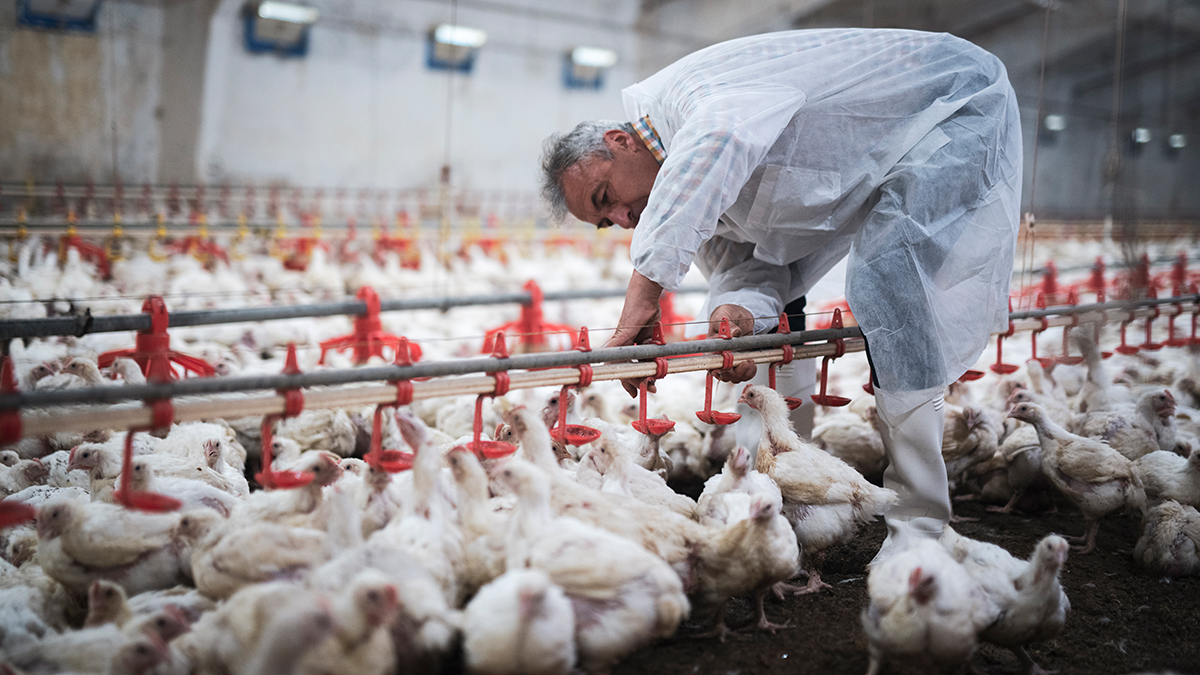Key points
- Avian influenza, also called bird flu, is a disease caused by infection with avian influenza A viruses.
- Bird flu viruses do not normally infect humans.
- However, the disease can infect unprotected people who work with infected animals, or contaminated materials or surfaces.
- This page provides information for people with exposure to wild or domesticated birds.

Overview
Current Situation
Infected birds shed virus in their saliva, mucous, and feces. Human infections with bird flu viruses are rare.
Workers can get infected if they breathe in virus in the air. They can also get infected if they touch something with virus on it and then touch their mouth, eyes, or nose. People may be exposed to the virus if they work with:
- Infected wild birds or poultry that are sick or dead
- Infected birds' droppings
- Contaminated litter
- Contaminated materials or surfaces like egg collection containers
At-risk populations
Workers at risk
- Broiler breeder farms, hatcheries, grow-out farms, and processing plant workers
- Layer farm workers
- Turkey farm workers
- Disease control and eradication workers (federal, contract, and company workers)
- Live-bird market workers
- Wildlife biologists who handle birds
- Animal control, welfare, and rescue workers who handle infected animals
Areas at risk
Outbreaks occur occasionally around the world. Outbreaks in poultry were associated with illness and death in humans in Asia, Africa, Europe, the Pacific, and the Near East. While very rare, some bird flu viruses caused illness in humans in North America.
Prevention
Resource
Infections typically happen after someone has close, prolonged and unprotected contact with infected birds and touches their mouth, eyes, or nose. Unprotected contact means no gloves or other personal protective equipment (PPE). Anyone likely to have exposure to bird flu viruses should take protective measures.
